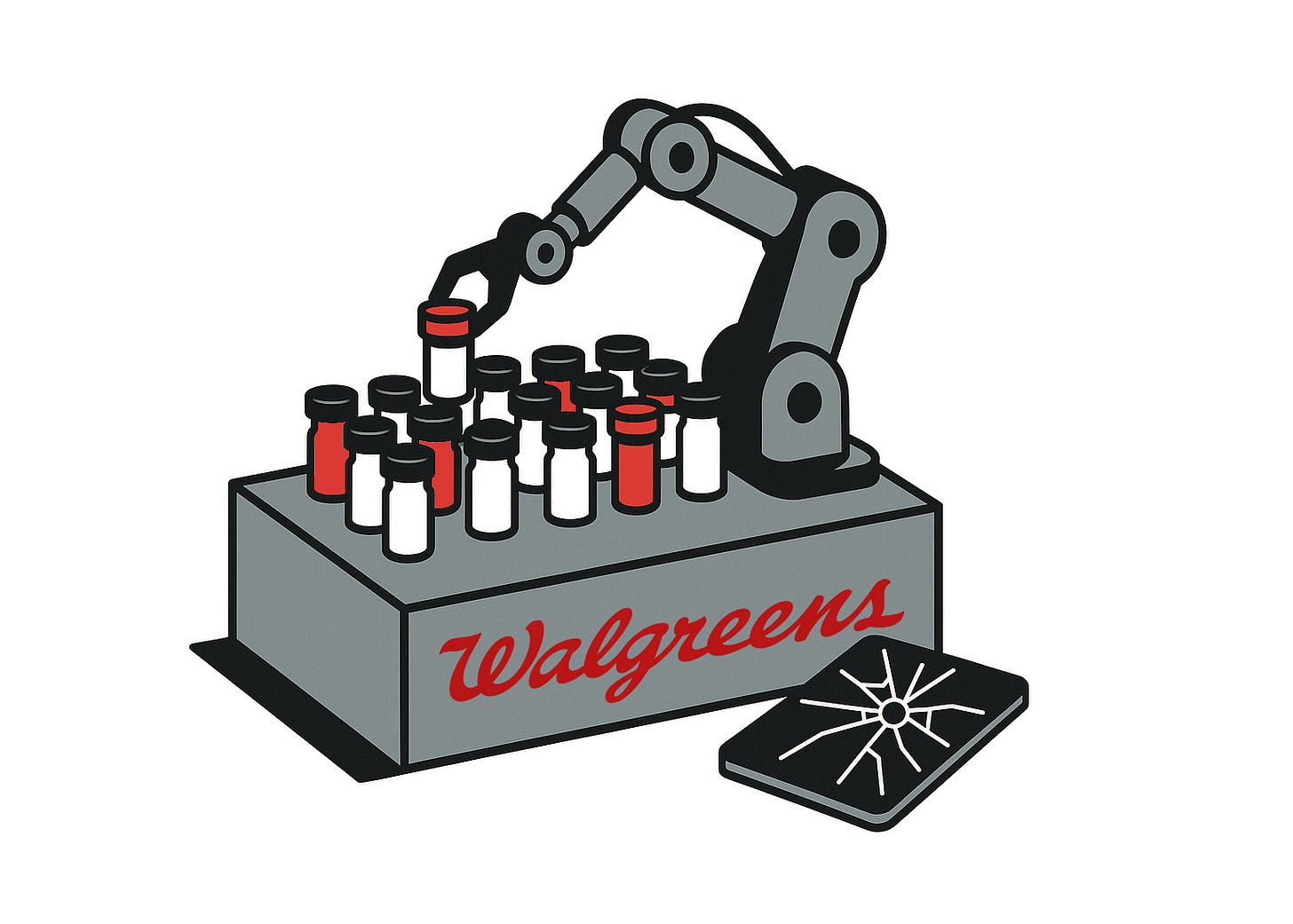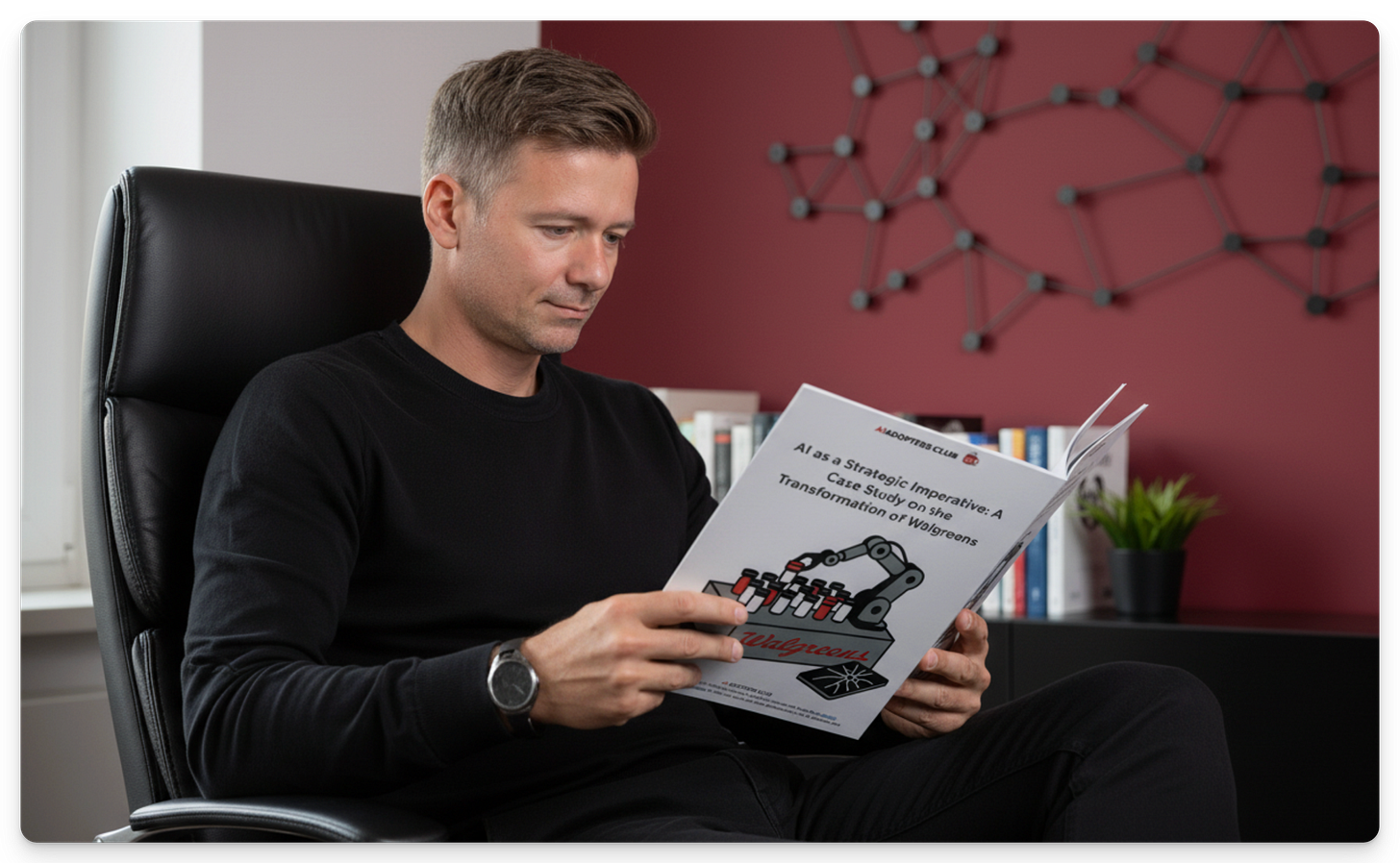How Walgreens cut pharmacy costs 13% with AI
A $500 million lesson in operational AI that most businesses get wrong
Hey Adopter,
Walgreens serves 8 million customers daily. Margins are thin. Competition is brutal. Amazon, CVS, and Walmart are all fighting for the same prescriptions.
The company needed to cut costs without cutting corners. Standard approach? Hire consultants, run pilots, write reports. Walgreens went different. They automated the boring stuff first, then built on top of that foundation.
The result: $500 million in savings, 13% lower prescription costs, and pharmacists administering 40% more vaccines. No magic. Just operational discipline applied to the right problems in the right sequence.
Most companies do this backwards. They chase customer-facing AI before fixing internal chaos. They pilot everything and scale nothing. They treat data infrastructure as an afterthought, then wonder why their AI projects fail.
Walgreens made mistakes too. A $200 million smart refrigerator disaster. Three CIOs in one year. Data quality problems that still haven’t been fully solved. But the operational AI work succeeded because they followed a playbook most businesses ignore.
This case study breaks down exactly what worked, what failed, and why.
The full 38-page report covers:
The cloud migration decision that enabled everything else, including a 3x performance improvement at one-third the cost
How demand forecasting went from 15% over-forecasting to 1%, cutting inventory waste across 9,000 stores
The robotic micro-fulfilment network that freed pharmacists to do clinical work instead of counting pills
Why the partnership model with Palantir, Zebra, and Microsoft delivered faster results than building in-house
The catastrophic failure of the smart refrigerator project and the governance breakdown that let it happen
Download the full report for the complete implementation roadmap, vendor evaluation criteria, and what to do next checklist.




